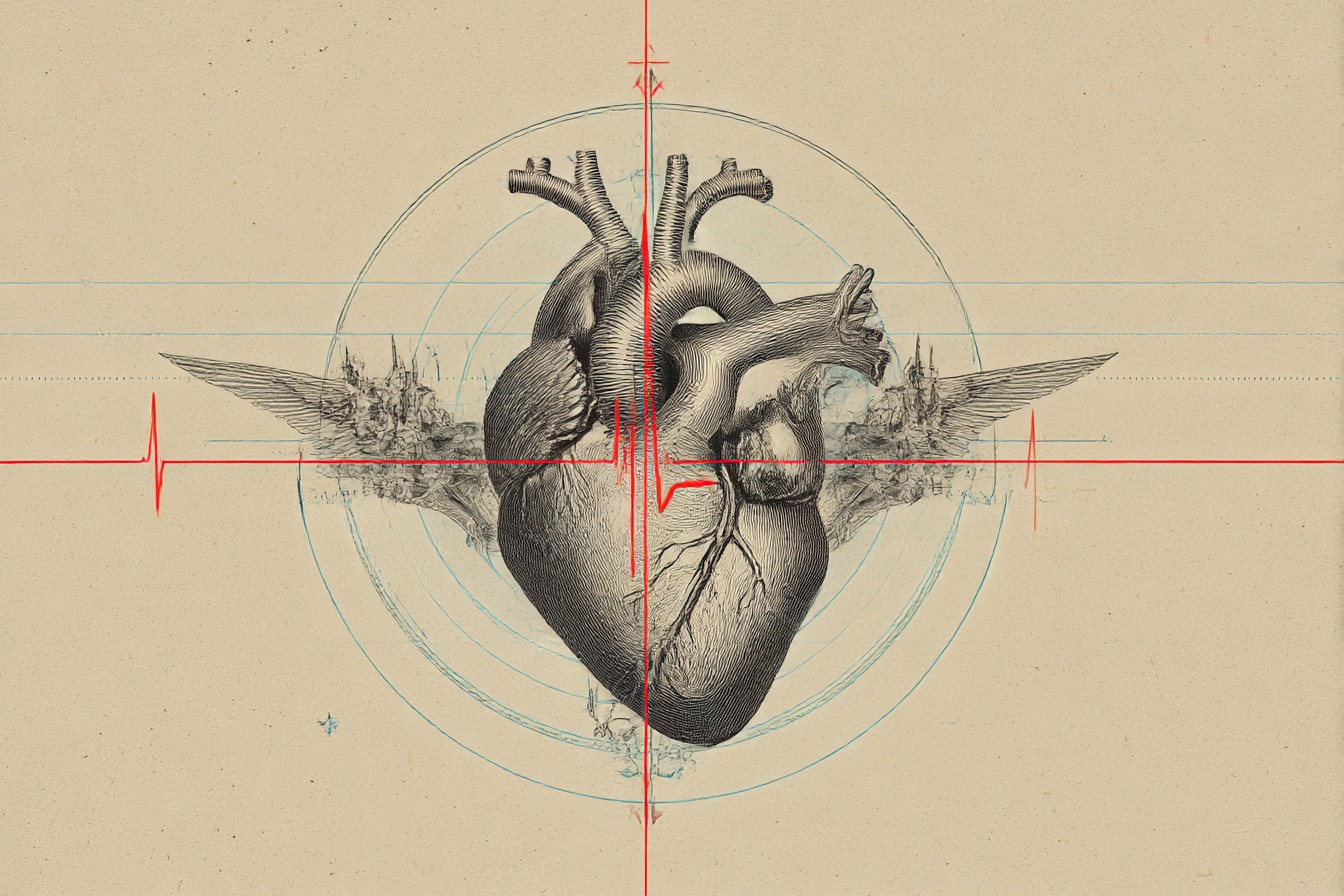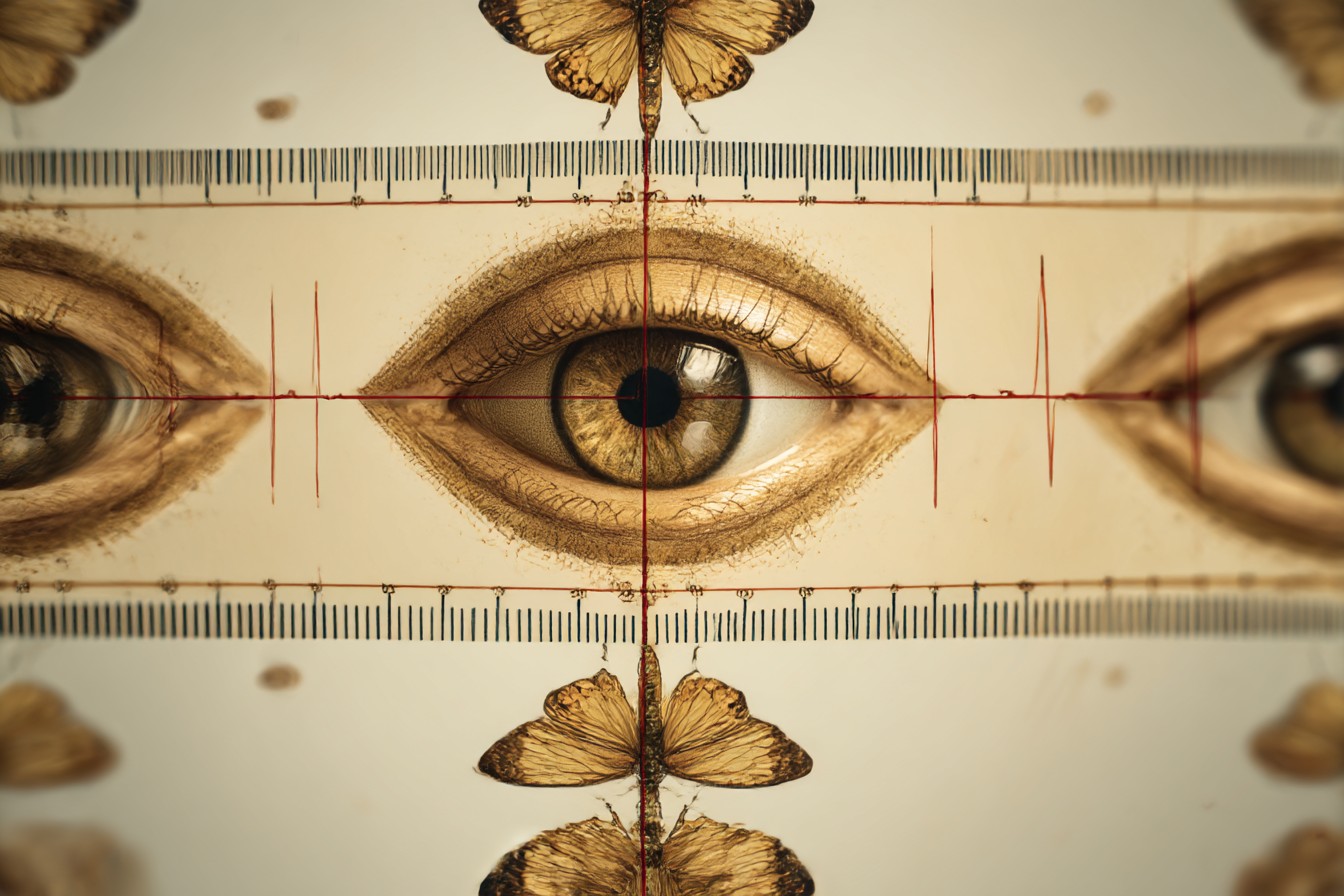It started with a late-night rabbit hole of cardiovascular research papers after Mei found me obsessively checking my pulse for the third time that day. “It’s just a routine health metric,” I’d explained, while she gave me that look—the one that says she knows I’m about to disappear into a weeklong experimental vortex.

“Your pupils are dilated in that specific way they get when you’re formulating a terrible idea,” she observed, closing my laptop. “What are you planning this time?”
I wasn’t planning anything… initially. But then I stumbled across this fascinating paper on cellular lifespan determinants, and tucked within was this throwaway statistic about cardiac contractions across species. Turns out, most mammals experience roughly the same number of heartbeats in their lifetime—about 1 billion. Mice, with their rapid-fire hearts thumping at 500-700 beats per minute, burn through their allotment in about 3 years. Elephants, with their lumbering 30 beats per minute, stretch them across 70 years.
Humans are the weird outliers. With medical advances and lifestyle improvements, we’ve managed to cheat the system, getting about 2.5 billion heartbeats instead of just 1 billion. That’s when the mathematician in me (admittedly the weakest of my scientific personas) kicked in.

Wait a minute. If I’ve got roughly 2.5 billion heartbeats for my entire existence, and each one is a non-renewable resource… haven’t I already used up a frightening portion of them?
Look, I understand that measuring life in heartbeats rather than years isn’t exactly groundbreaking. Poets and philosophers have probably been doing it for centuries. But there’s something viscerally different about calculating your own remaining cardiac contractions and realizing they’re steadily ticking down with each passing second.
So I did what any reasonable scientist would do—I constructed an unnecessarily elaborate experimental protocol to measure my existence by heartbeats rather than years for an entire week.

The methodology was straightforward, if slightly obsessive. I modified a fitness tracker with additional sensors and custom software (Josh helped with the coding—he’s still terrifyingly good with algorithms despite having transitioned from theoretical physics to developing unnecessarily complex coffee machines). The result was a device that not only counted my heartbeats in real-time but categorized them based on activity levels, emotional states, and productivity metrics.
I also created an app that converted traditional time measurements into “heartbeat units” for all my scheduled activities. My morning shower? Approximately 500 heartbeats. Commute to the university? 2,300 heartbeats. The departmental meeting that feels eternal? A staggering 7,000 heartbeats (roughly 0.0003% of my total allotment, which somehow feels both insignificant and entirely too much to spend listening to Dr. Peterson argue about parking spaces).
The first day was fascinating. I’d wake up, check my overnight expenditure (roughly a resting 30,000 heartbeats), and then proceed to document each activity with its associated cardiac cost. Coffee with Mei? 1,200 heartbeats of pure investment value. Answering emails? 3,500 heartbeats that I’ll never get back.

By day three, things took a more existential turn.
I was standing in line at the grocery store when my wrist buzzed—an alert that I’d just spent 500 heartbeats waiting to purchase a sandwich and some questionable impulse-buy cookies. Five hundred contractions of the most vital muscle in my body, gone forever, exchanged for the privilege of moving three feet closer to the cashier.
“Are you okay?” asked the woman behind me. Apparently, I’d said “biological currency exchange” out loud while staring intensely at my wrist.

That night, I calculated that at my average resting heart rate of 68 beats per minute, I have approximately 1.3 billion heartbeats left. Which sounds like a lot until you realize that’s the same numerical magnitude as national debts or astronomical distances—big numbers that feel falsely comforting until you really examine them.
“You’ve gone weird again,” Mei noted over dinner, watching me methodically time how long it took to consume a forkful of pasta and calculating the heartbeat expense. “Even for you, this is unusually existential.”
“I’m just conducting a temporal perspective experiment,” I explained, showing her my spreadsheet of heartbeat expenditures. “Did you know we spend approximately 400,000 heartbeats a week just scrolling through social media? That’s the equivalent of two entire days of your cardiac life spent looking at pictures of people’s brunches and pets.”

Mei, who has the patience of someone who regularly explains quantum computing concepts to venture capitalists, simply raised an eyebrow. “And what exactly is the scientific value of making yourself anxious about how you spend every heartbeat?”
Good question. The scientific value. I mumbled something about resource allocation optimization and temporal perception before admitting, “I have no idea. But I can’t stop thinking about it now.”
By day five, I’d developed a disturbing mental habit of instantly converting all time-based measurements into heartbeats. The departmental meeting wasn’t “one hour long”—it was “4,080 heartbeats of my finite existence.” My morning run wasn’t “30 minutes”—it was “4,500 heartbeats,” but at least those felt like an investment in perhaps gaining more beats later.

The real crisis hit while watching Netflix. I calculated that the average series binge costs roughly 40,000 heartbeats. Forty thousand contractions of the most complex muscle arrangement in my body, each one requiring precise electrical signaling and molecular perfection, all spent watching someone pretend to be a troubled detective or awkward love interest.
That’s when I texted Josh at 2 AM: “IS ENJOYING ENTERTAINMENT A VALID USE OF CARDIAC RESOURCES OR AM I LITERALLY KILLING MYSELF FOR CONTENT?”
His response was impressively coherent for that hour: “Pretty sure hearts evolved to keep us alive while we do things like enjoy stories around campfires. Also, please take off whatever monitoring device is causing this crisis.”

I didn’t take it off, of course. I was committed to the protocol. But I did start noticing something fascinating—activities that increased my heart rate substantially often felt subjectively shorter than their heartbeat count would suggest. A 5,000-heartbeat run (with elevated heart rate) felt briefer than a 3,000-heartbeat meditation session (with lowered heart rate).
This led to an impromptu secondary experiment on the relationship between subjective time perception and cardiovascular activity, which involved me attempting various activities while monitoring both heart rate and subjective time estimates. The preliminary results suggest we experience time differently depending on our cardiac rhythm, which seems obvious in retrospect but was somewhat mind-blowing to track in real-time.
On day six, I hit what I can only describe as “heartbeat rock bottom.” I found myself standing in the kitchen at 3 AM, refusing to get a glass of water because I’d calculated that the 30-second trip would cost me approximately 34 heartbeats. I was literally dehydrating myself to save cardiac contractions. The absurdity finally penetrated my experimental fugue state.

What exactly was I saving these heartbeats for? Some future time when heartbeats would somehow be more valuable? Was I planning to die with a heartbeat surplus, like unused vacation days?
Mei found me the next morning surrounded by papers covered in calculations. I’d been working out how many heartbeats various activities had cost me throughout my life. Approximately 63 million spent sleeping just in the past year. About 97,000 spent brushing my teeth since childhood. Nearly 14 million dedicated to my PhD research. Countless millions spent laughing with friends, making love, reading books, watching sunsets, and all the other activities that make up a life.
“Have you reached any profound conclusions from your cardiac accounting?” Mei asked, somehow managing not to sound sarcastic.
I looked up from my existential mathematics. “Actually, yes. Two things. First, trying to optimize your heartbeats is fundamentally misguided because it’s not the number that matters but what they’re powering. And second, a surprising number of my heartbeats have been spent doing things I can’t even remember now.”
The experiment officially ended on day seven, though I kept the modified tracker on for a few extra days. The final data revealed I’d used approximately 669,600 heartbeats that week. About 200,000 of them were spent sleeping (necessary biological maintenance). Another 103,000 were spent on work activities (supposedly meaningful contribution). Approximately 75,000 went to exercise (investment in gaining more beats later). And the remaining 291,600 were distributed among everything else—eating, showering, commuting, socializing, doom-scrolling, and contemplating the very nature of measuring life this way.
The most profound realization wasn’t about efficiency or optimization. It was simpler than that: We spend heartbeats. That’s what they’re for. They’re meant to be used up while experiencing whatever it is we choose to experience.
I still occasionally check my running heartbeat total—I’m somewhere north of 1.2 billion now—but I’ve stopped viewing it as a depleting resource and more as an ongoing measurement of a life being thoroughly lived.
Though I did cancel three upcoming departmental meetings. Some heartbeat expenditures really are questionable investments.
Leave a Reply